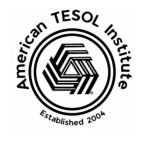One of the most influential insights into language acquisition comes from the work of Dr. Laura-Ann Petitto, a leading researcher in cognitive neuroscience and language development. Her research highlights a critical period for language acquisition, specifically from birth to age nine, during which children are uniquely equipped to absorb and master multiple languages. For TESOL educators, these findings underscore the importance of early language exposure and provide valuable strategies for teaching English as a second language (ESL) to young learners.
Why Early Language Exposure Matters
Dr. Petitto’s research shows that the earlier a child is exposed to a second language, the more naturally they develop comprehension and fluency. This is due to the brain’s plasticity during early childhood, which enables it to adapt and create neural pathways specifically for processing multiple languages. Here are some key takeaways:
- Optimal Age for Language Acquisition:
- From birth to age nine, children’s brains are primed for learning languages. During this period, they can acquire native-like pronunciation and grammatical structures more easily than older learners.
- After age nine, the brain begins to lose some of its flexibility, making it more challenging to develop native-like fluency in a second language.
- Dual Language Benefits:
- Learning a second language during this critical period doesn’t just enhance linguistic skills. It also strengthens cognitive abilities such as problem-solving, multitasking, and memory retention.
- Natural Learning Processes:
- Young children learn through immersion and context, picking up language in a way that mirrors how they acquire their first language. This makes play, stories, and interactive activities essential in the ESL classroom.
Strategies for TESOL Teachers
Based on Dr. Petitto’s research, here are effective methods TESOL teachers can use to optimize language acquisition in young learners:
- Immersive Learning Environments:
- Create a classroom environment where English is consistently spoken and used. Encourage students to engage in conversation, even if they mix languages initially, as this fosters confidence and fluency.
- Play-Based Learning:
- Use games, role-playing, and hands-on activities to teach vocabulary and grammar in a fun, engaging way. This mirrors the natural way children learn their first language.
- Storytelling and Songs:
- Incorporate stories, songs, and rhymes into lessons to help students internalize language patterns. Rhythmic and repetitive content is particularly effective for young learners.
- Multisensory Teaching:
- Combine visual aids, gestures, and physical activities to reinforce language concepts. For example, using flashcards with pictures or acting out verbs can help solidify understanding.
- Consistency and Repetition:
- Reinforce key vocabulary and phrases through regular practice. Repetition helps embed language structures into memory.
- Cultural Integration:
- Introduce cultural aspects of English-speaking countries to provide context and make learning more relevant. This could include celebrating holidays, exploring traditions, or sharing food-related vocabulary.
Challenges and How to Overcome Them
While teaching young learners has many benefits, it also comes with challenges:
- Short Attention Spans:
- Keep activities short and varied to maintain engagement. Incorporate movement and hands-on elements to capture their interest.
- Parental Involvement:
- Educate parents about the importance of language exposure at home. Encourage them to incorporate English into daily routines through simple activities like reading or watching English-language cartoons.
- Balancing L1 and L2:
- Ensure that students’ native language (L1) is valued and supported alongside their second language (L2). This prevents confusion and promotes bilingualism.
Fun Facts About Language Acquisition
- Babbling Benefits: Research shows that even bilingual babies babble differently depending on the language they’re exposed to, demonstrating early sensitivity to linguistic sounds.
- Critical Period Hypothesis: This theory suggests that the ability to acquire languages with native proficiency declines after puberty, making early exposure essential.
- Brain Benefits: Bilingual individuals often have a denser gray matter in regions of the brain associated with memory, attention, and language.
Takeaway for TESOL Teachers
Dr. Laura-Ann Petitto’s research is a reminder of the incredible potential young learners have for acquiring second languages. By creating immersive, engaging, and age-appropriate lessons, TESOL teachers can harness this critical period to give children a lifelong advantage in language learning. Early exposure doesn’t just benefit language skills—it builds cognitive abilities and fosters a global perspective, making young learners more adaptable and culturally aware citizens of the world.
The earlier a child begins learning a second language, the more profound the impact—and TESOL educators have the power to shape that journey.



